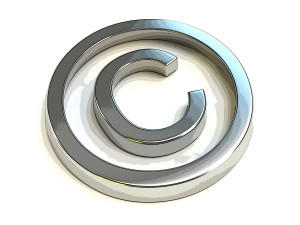 Here are three copyright concepts that affect your right to use other people’s works.
Here are three copyright concepts that affect your right to use other people’s works.
Fair Use. Under a legal doctrine known as “fair use,” there are times when you have the right to discuss, criticize or poke fun at copyrighted works without seeking permission from the copyright owner. In general, fair use permits you to copy small portions of a work for “transformative” purposes such as parody, scholarship or commentary. For example, a political cartoonist can freely copy an image of a copyrighted character for purposes of making an editorial cartoon.
The difficulty of applying fair use is that you can’t guarantee that your use is a fair use until a judge says so at the end of a lawsuit—and at that point you may be bankrupt from legal fees. We’ve written more about fair use at the Stanford Library website.
The Public Domain. Permission is not needed to reproduce artwork that is in the public domain: that is, anything that was published in the United States before 1923, or any copyrighted work that was published before 1964 and whose copyright was not renewed (it’s estimated that only about 11 percent of copyrights issued before 1964 were renewed).
Determining whether a work is in the public domain requires research. The Copyright Office does not maintain a list of public domain works. Private companies can perform searches and furnish public domain reports, but this gets expensive. If you’re interested in pursuing public domain works, review The Public Domain: How to Find & Use Copyright-Free Writings, Music, Art & More by Stephen Fishman (Nolo).
The First Sale Doctrine. The first sale doctrine permits the owner of a copy of a copyrighted work to resell, destroy or loan this copy. You can utilize the first sale doctrine for your own benefit. For example, if you’re a frame maker, you can purchase copyrighted posters and resell them in your custom-made frames. Similarly, if you are a cabinetmaker, you can apply copyrighted postcards to the outside of a bureau. But beware—as the story below demonstrates, first sale rules are sometimes confusing
To Frame or to Mount? As with many areas of copyright law, there is some confusion as to the boundaries of the first sale doctrine. Two cases involving the framing of artwork seem to have arrived at different results. In one case, a company purchased a book of prints by the painter Patrick Nagel, cut out the individual images and mounted them in frames for resale. A federal appeals court in California held that this practice was an infringement and not permitted under the first sale doctrine. (Mirage Editions, Inc. v. Albuquerque A.R.T. Co.) In a different case, a company purchased note cards and mounted them on tiles. A federal court in Illinois determined that this practice was not an infringement and was permitted under the first sale doctrine. (Lee v. Deck the Walls, Inc.) Under these rulings, a person in California cannot mount individual images from an art book, while a person in Illinois can mount individual note cards.
Should it matter whether the object that is mounted is from an art book or from a note card? Perhaps: In the California case, the justices felt that removing individual images from a bound collection altered the works. In other words, Nagel’s estate did not intend for the works to be separated from the collection. Therefore, this framed use was considered a derivative work. In the Illinois case, the judge did not believe that mounting an individual note card, already separate, created a derivative work, since the image was not altered or modified.
